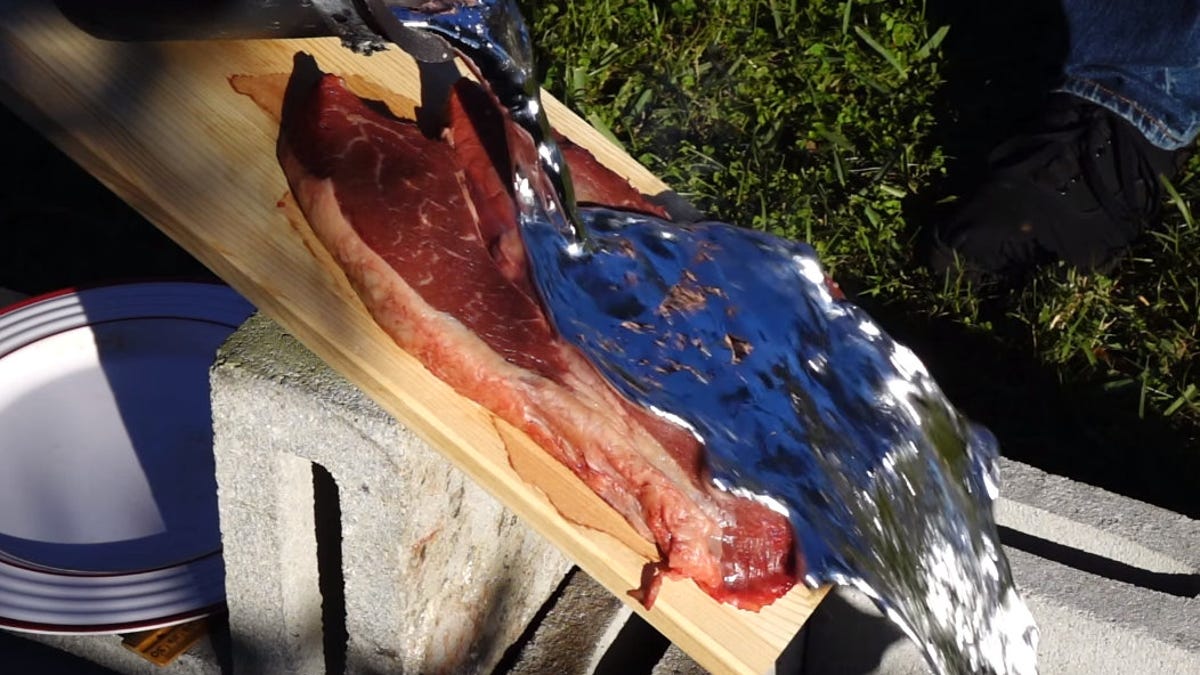Molten aluminum, meet raw steak
Don't try this cooking method at home, folks. The Backyard Scientist answers the burning question of what happens when liquid aluminum contacts a hunk of meat.
There are many ways to cook beef. You can toss it in a frying pan, throw it in the smoker, slap it on the grill or fire it up in an oven. It probably never occurred to you to cook it using molten aluminum, however. That exact thought did occur to YouTuber the Backyard Scientist and resulted a "Molten Aluminum Vs Steak" video that went up Thursday.
The reason for this odd-sounding experiment? The Backyard Scientist is curious to find out how much damage molten aluminum can do to muscle tissue.
First, the authenticity of the steak is confirmed by a hungry dog eager to test it out. The scientist melts the aluminum in a propane-powered foundry and then pours it on an incline over the bare steak. It ends up in a puddle on top of some concrete blocks.
The Backyard Scientist notes that the outside of the steak is just barely browned where the aluminum touched it. "It doesn't look that bad. I thought it would have been worse," he says. He also declares that it smells good as he cuts into the meat to check out how much it cooked.
According to the Aluminum Association, molten aluminum "is typically handled at 1300-1450 degrees Fahrenheit to avoid premature solidification." That works out to at least 704 degrees Celsius. The association also warns that "mixing water or other contaminants with molten aluminum can cause explosions." That's a great reason not to try this at home. It's a good thing we have the Backyard Scientist to do it for us and film the results.
As it turns out, pouring molten aluminum onto a steak is a very inefficient way to cook a slab of beef. The next experiment involves cooking a steak on a stovetop on a pool of liquid tin. You'll have to watch the video to see the sizzling results.
The Backyard Scientist has had fun with molten aluminum in the past, pouring the substance into a lava lamp, a watermelon and a swimming pool. The watermelon experiment was particularly interesting since the metal cooled into an exotic sculptural shape that looks like modern art. Perhaps the scientist will tackle some other food substances in the future, like marshmallow Peeps or a 3D-printed pizza.


